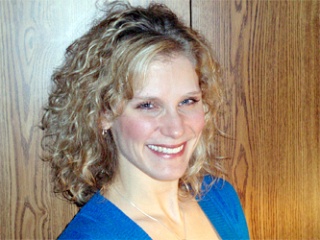Swimsuit, capri, and tank top weather is right around the corner.
Many of my friends, family members and clients want to tone their bodies before they shed their winter clothes, and they have questions about how to best do this. However, there seems to be a quite a bit of confusion about how to burn and lose fat.
Many of my acquaintances believe that cardiovascular exercise is the key to burning fat. It is true that cardiovascular training burns calories, but adding resistance training to your workout helps you shed extra fat that your cardio routine may not be targeting. Here’s some research to help illustrate my point.
According to the article “Fitness Face Off” in the April 2009 issue of “Women’s Health Magazine” (These findings apply to men, too):
During a 30 minute workout, cardio burns more calories than strength training, but pumping iron cuts more calories overall. According to the article, “Lifting weights gives you a metabolic spike for an hour after a workout because your body is trying hard to help your muscles recover. That means you’ll fry an additional 25 percent of the calories you just scorched during your strength session.” That means if you burned 200 calories during your strength training workout, you’ll burn 250 overall.
Lean muscle burns calories even when you are at rest. “For every 3 pounds of muscle you build, you’ll burn an extra 120 calories a day — just vegging — because muscle takes more energy to sustain.” Just think: over the course of a year, you’d be burning almost 10 pounds of fat without trying.
I’ve found other sources that support the data above. According to findings from a study which examined the specific effects of resistance exercise on fat metabolism in the April 2009 issue of Idea’s “Fitness Journal”:
Energy expenditure was elevated for 40 minutes after a resistance training workout. This means that a person’s body continues to burn calories at an elevated rate after the workout is complete.
Fat burning levels were raised 78 percent during exercise, which according to these findings suggests that “fat was being used as a fuel (in conjunction with carbohydrate) during and after the resistance training” session.
If you want to burn fat, it also makes sense to push yourself during strength training workouts. According to a study in the journal “Medicine & Science in Sports & Exercise,” increasing the weight also helps to increase total calories burned. Women burned nearly twice as many calories in two hours after their workout when they lifted 85 percent of their max load for eight reps than when they lifted a lower weight (45 percent of their max) for 15 reps.
So, according to this research, it makes sense to add resistance training to your cardiovascular workouts. As I’ve preached in the past, proper form and technique are critical, so if you lack experience in weight training, be sure to seek the advice of a certified fitness trainer for guidance. Also, if you have health problems, ask your doctor for his or her blessing before you begin.
Remember that none of your muscle tone will show unless you are eating correctly. Summer is right around the corner, so stop eating junk food, and begin eating 4-5 servings of fruits and veggies a day. Put down that remote control and pick up a set of dumbbells. Pack away those baggie winter clothes and find your swimsuits, tank tops and shorts.
Good luck, and have fun. As always, feel free to email me if you have questions.
Angie Gooding is an educator and a personal trainer certified through ACE (American Council on Exercise) and owner of Inspire Fitness & Training. She lives locally, and trains clients in a private location in Marysville. She can be reached at AngieGooding@comcast.net or www.inspirefitnessandtraining.com.



